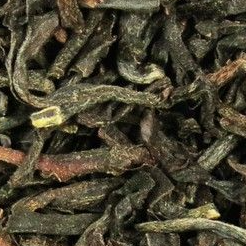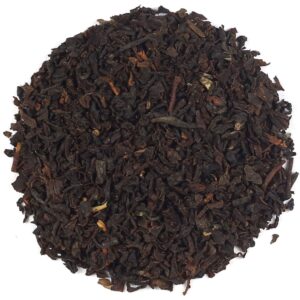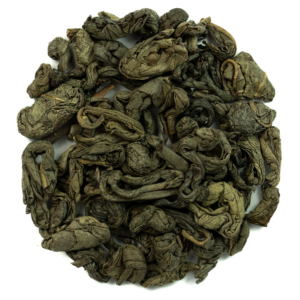Java Teas
You can buy Java Teas online or in-store here at The Kent and Sussex Tea and Coffee Company. We stock several types, from Green to Java Black Tea – each as delicious and wholesome as the last and always packed fresh to order.
Although the Indonesian island is perhaps best known for Java Coffee, these remarkable leaves have much to offer – as, hopefully, you’re about to find out today.
Showing all 3 results
A Glimpse Into the World of Java Teas
First planted by the Dutch East India Company in 1684. The seeds had originated from the Camellia sinensis var. sinensis variety, initially transported from Japan.
While a handful of Tea gardens developed, the Dutch realised that the cultivar used wasn’t easily grown in the soil and climate of Java. The colonists instead obtained and planted seeds from the Camellia sinensis var. assamica variety.
It turned out that the Assam Tea plant, first found in India, flourished in the local environment. As a result, production of these then newly-established and since dubbed Java Tea leaves expanded significantly.
By the outbreak of the Second World War (1939-1945), Indonesia was the fourth-largest producer of Tea; however, the conflict led to a considerable decline.
A resurgence of the industry kicked off in the 1980s, which today is as strong as ever. Now, in fact, Java, alongside the rest of Indonesia, exports nearly 170,000 tons of Tea per year.
This mostly takes place in the West Highlands, a mountainous region with rich volcanic soil and tropical climates. The best harvest tends to be during the summer months, primarily that of Java Black Tea.
What Does Java Tea Taste Like?
To say that all varieties of Java Loose Tea taste similar would be a disservice to their unique qualities, from their regional origins to their characteristics. Java Orange Pekoe Ciater, for example, which comes from the Ciater Highlands of western Java, is a Black Tea with fruity notes.
Java Green Tea ‘PS’ Sunda Purwa, meanwhile, is a deep, grassy and refreshing Green Tea from the Ciwidey Estate.
Caffeine Content
The distinctiveness from brew to brew extends to caffeine content. Black Tea, which is the most processed type, tends to have about 45-mg of the stimulant per 8-oz cup.
Green Tea, which, after White Tea, is the least processed variety, usually has no more than 30-mg per serving. Regardless, both will likely influence your energy levels, thereby enabling you to get out of bed in the morning.
Java Tea Benefits
If flavour and caffeine kicks aren’t enough, things could get better still with Java Tea health benefits. This is not the stuff of conjecture and speculation but fact, backed by the latest scientific research.
Indeed, preliminary research (emphasis on “preliminary”) has found correlations between this and improved kidney health. There is even the possibility of it combating gout. And that’s not all.
Weight Loss Potential
Evidence from a Green Tea weight loss study, published in the Journal of Research in Medical Sciences, appears promising. It discovered that participants who drank four cups of any Green Tea daily, Java Tea included, experienced a drop in body weight, BMI, and waist circumference.
Whoever said your favourite beverage couldn’t help you fit into your favourite pair of jeans again?
For Acne and Skin Conditions
Java Black Tea can maintain your skin’s vitality and youthful look due to its abundance of antioxidants. Its polyphenols and Tannins in Tea, for instance, can boost the rejuvenation of skin cells.
Its catechins and flavonoids, on the other hand, might prevent skin infections and aid with conditions such as acne. There is also the chance of it having anti-ageing properties to help fight wrinkles!

 Loose Leaf Tea
Loose Leaf Tea Pyramids
Pyramids Tea Bags
Tea Bags Africa
Africa Assam
Assam Ceylon
Ceylon Chinese
Chinese Darjeeling
Darjeeling European
European Indian
Indian Japan
Japan Nepal
Nepal South East Asia
South East Asia Ayurveda Tea
Ayurveda Tea Black Tea
Black Tea Chai Tea
Chai Tea Flowering Tea
Flowering Tea Fruit Tisanes
Fruit Tisanes Green Tea
Green Tea Herbal Tea
Herbal Tea Matcha Tea
Matcha Tea Oolong Tea
Oolong Tea Organic Tea
Organic Tea Pu erh Tea
Pu erh Tea Rooibos Tea
Rooibos Tea White Tea
White Tea Asian Coffee
Asian Coffee Caribbean Coffee
Caribbean Coffee Central American Coffee
Central American Coffee South American Coffee
South American Coffee Coffee Blends
Coffee Blends Decaffeinated Coffee
Decaffeinated Coffee Espresso Coffee
Espresso Coffee Ethically Sourced Coffee
Ethically Sourced Coffee Flavoured Coffee
Flavoured Coffee Organic Coffee
Organic Coffee Single Origin Coffee
Single Origin Coffee Chocolate 1
Chocolate 1 Chocolate 2
Chocolate 2 Chocolate 3
Chocolate 3 Chocolate 4
Chocolate 4 Chocolate 5
Chocolate 5 Chocolate 6
Chocolate 6 Chocolate 7
Chocolate 7 Chocolate 8
Chocolate 8 Chocolate 9
Chocolate 9 Loose Tea Filters
Loose Tea Filters Tea Accessories
Tea Accessories Tea Bricks
Tea Bricks Tea Caddies
Tea Caddies Tea Caddy Spoons
Tea Caddy Spoons Tea Gift Ideas
Tea Gift Ideas Tea Infusers
Tea Infusers Tea Strainers
Tea Strainers


